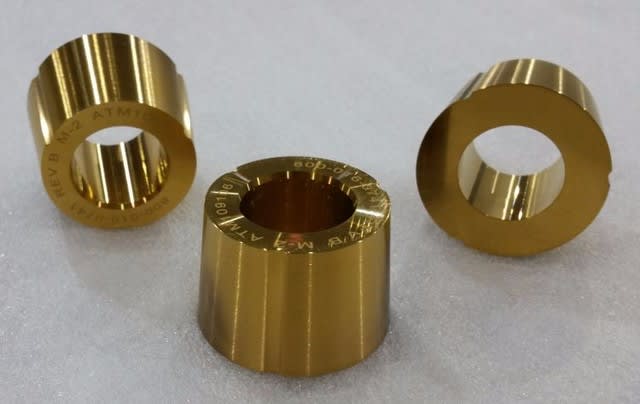Titanium thin film is generally used to improve the wear resistance of objects. For example, taps and drill bits for high-speed machining centers can be coated with titanium to improve the wear resistance of the tool, and the surface treatment of the piston ring is also titanium-plated, also in order to improve the wear resistance.
Related: Everything you need to know about titanium sputtering target
The titanium film not only has a very high wear resistance, but also has good decorative and aesthetic properties. The color of the titanium film is golden. After coating with a thin titanium film, the object can prevent oxidation, rust, etc.

Commonly used titanium coating processes
1. Titanium coating processes: vacuum coating and spraying process.
The vacuum coating includes: magnetron sputtering method, arc ion plating method, evaporation method, etc. Titanium sputtering targets are indispensable raw materials in the vacuum coating process.
The method of spraying is cold spraying.
Both coating methods have their own advantages. The advantage of vacuum coating is that the film it coated is very thin, and has high compactness and excellent performance. While the biggest advantage of spraying is that it is cheap. However, the coating is very thick to the order of millimeters and the surface roughness requires subsequent processing.
What kind of gas does the magnetron sputtering titanium need?
1. When a metal film is applied, argon gas is generally used as a working gas. It is an inert gas, and does not undergo oxidation when the substrate is heated under vacuum. Generally speaking, argon gas is used to adjust the pressure of the furnace body, and the effect on color is not obvious!
2. Oxygen is generally used for plating non-metallic films, such as TiO2, and there is no need to worry about membrane oxidation after plating.
3. Nitrogen is the gas that is flushed into the vacuum chamber when the target coating is changed, so that the pressure in the vacuum chamber and the atmospheric pressure are kept equal, and the other film can be plated for the target. Nitrogen generally increases the yellow b value, such as zirconium, which is golden yellow!

What color can the titanium film form through different gases?
1. TiN (gold)
2. TiZrN (Gold)
3. TiC, TiNc (bright gray ~ gun black)
4. TiNC (rose gold ~ brown)
5. TiO (gem blue ~ iridescent)
For more information, please visit Stanford Advanced Materials, a professional sputtering target manufacturing company, for your choice of titanium coating.
Related: Everything you need to know about titanium sputtering target
The titanium film not only has a very high wear resistance, but also has good decorative and aesthetic properties. The color of the titanium film is golden. After coating with a thin titanium film, the object can prevent oxidation, rust, etc.

Commonly used titanium coating processes
1. Titanium coating processes: vacuum coating and spraying process.
The vacuum coating includes: magnetron sputtering method, arc ion plating method, evaporation method, etc. Titanium sputtering targets are indispensable raw materials in the vacuum coating process.
The method of spraying is cold spraying.
Both coating methods have their own advantages. The advantage of vacuum coating is that the film it coated is very thin, and has high compactness and excellent performance. While the biggest advantage of spraying is that it is cheap. However, the coating is very thick to the order of millimeters and the surface roughness requires subsequent processing.
What kind of gas does the magnetron sputtering titanium need?
1. When a metal film is applied, argon gas is generally used as a working gas. It is an inert gas, and does not undergo oxidation when the substrate is heated under vacuum. Generally speaking, argon gas is used to adjust the pressure of the furnace body, and the effect on color is not obvious!
2. Oxygen is generally used for plating non-metallic films, such as TiO2, and there is no need to worry about membrane oxidation after plating.
3. Nitrogen is the gas that is flushed into the vacuum chamber when the target coating is changed, so that the pressure in the vacuum chamber and the atmospheric pressure are kept equal, and the other film can be plated for the target. Nitrogen generally increases the yellow b value, such as zirconium, which is golden yellow!

What color can the titanium film form through different gases?
1. TiN (gold)
2. TiZrN (Gold)
3. TiC, TiNc (bright gray ~ gun black)
4. TiNC (rose gold ~ brown)
5. TiO (gem blue ~ iridescent)
For more information, please visit Stanford Advanced Materials, a professional sputtering target manufacturing company, for your choice of titanium coating.












